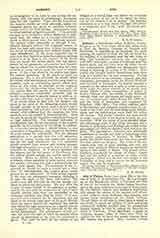

Admont, a Benedictine abbey in Styria, Austro-Hungary, on the river Enns, about fifty miles south of Linz. St. Hemma, Countess of Friesach and Zeltschach, is regarded as its foundress, for upon entering the convent at Gurk she left her lands for the building of a monastery near the salt works of Hall. The foundation, however, was not begun until 1072, more than a quarter of a century after the Saint’s death, and two years later the abbey church was consecrated by Gebhard von Helfenstein, Archbishop of Salzburg, in honor of St. Blasius. This prelate also brought twelve Benedictines from Salzburg as a nucleus for the new community. During the first century of its existence, Admont rose into prominence particularly under the Abbots Wolfhold and Gottfried of Venningen; the former founded a convent for the education of girls of noble families, while under the latter thirteen of its monks were chosen abbots of other monasteries. A period of decline followed after the middle of the thirteenth century, when war and rapine did much injury. A. new era opened under Abbot Henry VII (1275-97), and the work of restoration was completed by Engelbert (1297-1331). The abbey suffered again in the fifteenth and sixteenth centuries from the inroads of the Turks and the prevailing social disturbances, and the Reformation made itself felt within the cloister. The Abbot Valentine was even forced to resign on account of his leaning towards the new doctrines. With the return of more peaceful times, the educational work of the abbey extended and a faculty of philosophy and theology was added to the gymnasium, of which the cloister school had been the germ. The gymnasium, however, was afterwards transferred to Leoden and later to Judenburg, when it became independent of Admont. In 1865 the abbey and church were burnt, but were soon rebuilt. The first abbot was Isingrin. Not a few of his successors were men of great learning and zeal, and under their guidance Admont became an important factor in the history of Styria. The second abbot, Giselbert, introduced the reform of Cluny. Engelbert was the author of a number of works, chiefly theological. Albert von Muchar, who taught at the University of Graz and is known for his historical works, may also be mentioned.
H. M. BROCK

